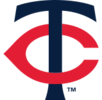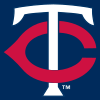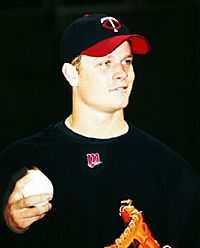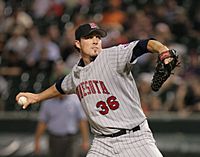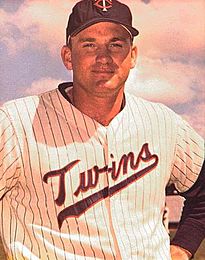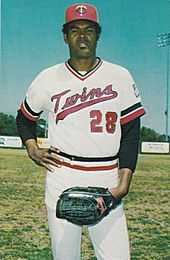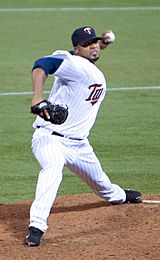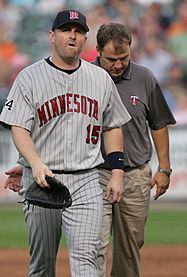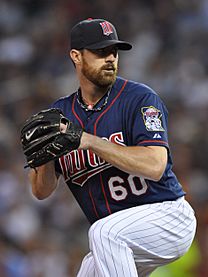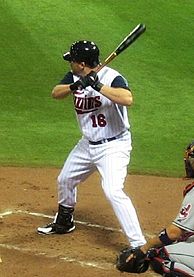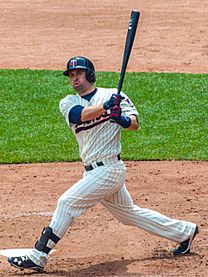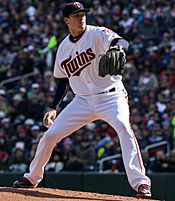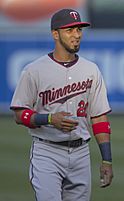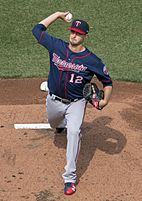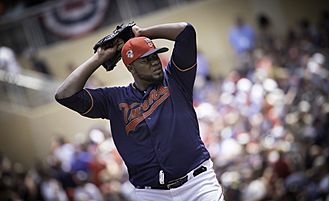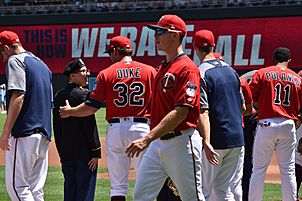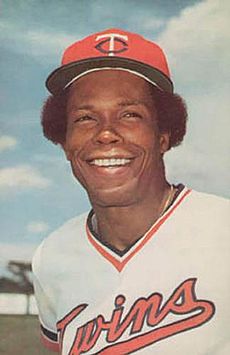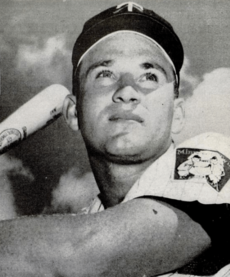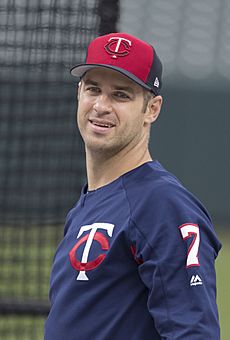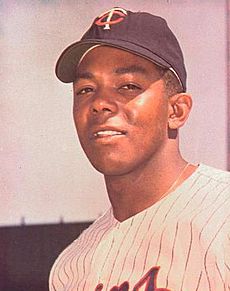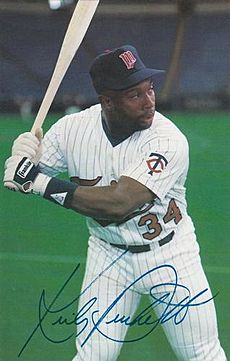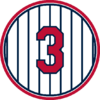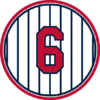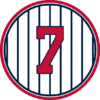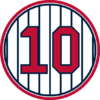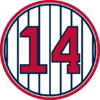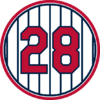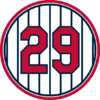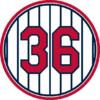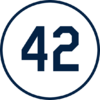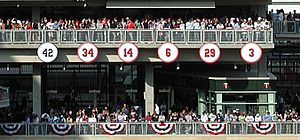Minnesota Twins facts for kids
Quick facts for kids Minnesota Twins |
|||||
|---|---|---|---|---|---|
|
|||||
|
|||||
| Major league affiliations | |||||
|
|||||
| Current uniform | |||||
| Retired numbers | |||||
| Colors | |||||
|
|||||
| Name | |||||
|
|||||
| Other nicknames | |||||
|
|||||
| Ballpark | |||||
|
|||||
| Major league titles | |||||
| World Series titles (3) |
|
||||
| AL Pennants (6) |
|
||||
| AL West Division titles (4) |
|
||||
| AL Central Division titles (9) |
|
||||
| Wild card berths (1) | 2017 | ||||
| Front office | |||||
| Principal owner(s) | Pohlad family (Joe Pohlad, chairman) | ||||
| President | Dave St. Peter | ||||
| President of baseball operations | Derek Falvey (Chief Baseball Officer) | ||||
| General manager | Jeremy Zoll | ||||
| Manager | Rocco Baldelli | ||||
| Mascot(s) | Twinkie (1980–1981) T.C. Bear (2000–present) |
||||
The Minnesota Twins are a professional baseball team located in Minneapolis. They play in Major League Baseball (MLB) as part of the American League (AL) Central Division. The team's name, "Twins," comes from the "Twin Cities" nickname for Minneapolis and Saint Paul.
The team started in Kansas City in 1894 as a minor league team called the Kansas City Blues. In 1901, the team moved to Washington, D.C. and became the major league Washington Senators. The franchise then moved to Minnesota and was renamed the Minnesota Twins for the 1961 season. The Twins played at Metropolitan Stadium from 1961 to 1981 and at the Hubert H. Humphrey Metrodome from 1982 to 2009. Since 2010, they have played at Target Field.
The team has won the World Series three times. They won in 1924 as the Senators, and in 1987 and 1991 as the Twins. From 1901 to 2023, the Senators/Twins team had a regular-season record of 9,259 wins, 9,955 losses, and 109 ties. As the Twins (through 2024), their record is 5,036 wins, 5,091 losses, and 8 ties.
Contents
Team History
Washington Senators: 1901–1960
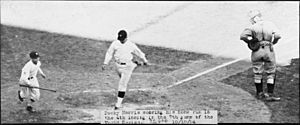
The team began in Washington, D.C., in 1901. It was one of the first eight teams in the American League. It was called the Washington Senators from 1901 to 1904. Then it was the Washington Nationals from 1905 to 1955, and the Senators again from 1956 to 1960. People often called them the Senators throughout their time in Washington. The name "Nationals" was only on their uniforms for two seasons.
For their first ten years, the Washington Senators usually finished near the bottom of the league. Things started to get better when 19-year-old pitcher, Walter Johnson, joined in 1907. Johnson became a star in 1911 with 25 wins. In 1912, the Senators improved a lot. Their pitchers were the best in the league. Johnson won 33 games, and his teammate Bob Groom won 24 games. This helped the Senators finish in second place. Clark Griffith joined the team in 1912 and became the owner in 1920.
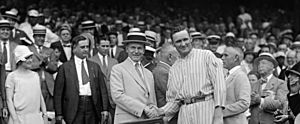
The team had a successful period in the 1920s and 1930s. Key players included Walter Johnson, Bucky Harris, Goose Goslin, Sam Rice, Heinie Manush, and Joe Cronin. In 1924, Johnson had a great year, winning 23 games. The Senators won the American League pennant for the first time. They then played against the New York Giants in the 1924 World Series. The series was very close, with many games decided by just one run.
In the final Game 7, the Senators were losing 3–1 in the 8th inning. Bucky Harris hit a ground ball that bounced strangely, allowing two runners to score and tie the game. Walter Johnson came in to pitch and kept the Giants from scoring. In the 12th inning, the Senators scored the winning run. This was the only World Series win for the team during its 60 years in Washington.
The next season, they won the American League championship again. However, they lost the 1925 World Series to the Pittsburgh Pirates. After Walter Johnson retired in 1927, he became the Senators' manager. In 1933, 26-year-old Joe Cronin became a player-manager. The Senators had a great record of 99 wins and 53 losses, winning the pennant easily. But they lost to the Giants in the 1933 World Series. After this loss, the team's performance declined, and fewer fans came to games.
Washington became known for often finishing last in the American League. Notable players like Cecil Travis, Buddy Myer, Roy Sievers, Mickey Vernon, and Eddie Yost played on these struggling teams. In 1954, the Senators signed future Hall of Famer Harmon Killebrew. By 1959, he was a regular player and led the league with 42 home runs.
After owner Griffith passed away in 1955, his nephew Calvin took over. Calvin sold the team's stadium and leased it back. This made people think the team might move. By 1957, Griffith started talking with Minneapolis–St. Paul about moving the team there. Even though attendance in Washington increased, the Minnesota deal promised more fans and more money from TV and radio.
The American League first opposed the move. But in 1960, a deal was made. Major League Baseball allowed Griffith to move his team to Minnesota. A new Senators team was created in Washington for the 1961 season.
Minnesota Twins: 1961–present
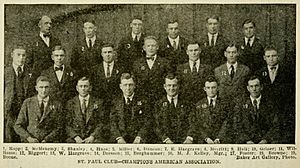
The team was renamed the Minnesota Twins and moved to Metropolitan Stadium in Bloomington, a suburb of Minneapolis. The team quickly found success in Minnesota. Star players like Harmon Killebrew and Bob Allison from Washington were joined by Tony Oliva and Zoilo Versalles. Later, Rod Carew and pitchers Jim Kaat and Jim Perry also joined. They won the American League pennant in 1965.
Another successful period came in the late 1980s and early 1990s. Under manager Tom Kelly, players like Kent Hrbek, Bert Blyleven, Frank Viola, and Kirby Puckett led the team. They won the franchise's second and third World Series titles (and the first two for Minnesota).
The name "Twins" comes from "Twin Cities," a common nickname for Minneapolis and Saint Paul. The team's owner wanted to avoid naming the team after just one city. He first suggested "Twin Cities Twins," but MLB disagreed. So, he named them the Minnesota Twins. The team kept its "TC" (for Twin Cities) logo on their caps. The team's main logo shows two men, one in a Minneapolis Millers uniform and one in a St. Paul Saints uniform, shaking hands across the Mississippi River within the shape of Minnesota.
1960s Success
The Twins were welcomed in Minnesota in 1961. They had many talented players like Harmon Killebrew, Bob Allison, Camilo Pascual, Zoilo Versalles, Jim Kaat, Earl Battey, and Lenny Green. Tony Oliva, who would win batting titles in 1964, 1965, and 1971, started playing in 1962. That year, the Twins won 91 games, their most since 1933.
In 1965, with Mudcat Grant winning 21 games, Versalles winning the A.L. MVP award, and Oliva winning the batting title, the Twins won 102 games and the American League Pennant. However, they lost the World Series to the Los Angeles Dodgers in seven games.
In 1967, Rod Carew was named the A.L. Rookie of the Year. The Twins, Boston Red Sox, Chicago White Sox, and Detroit Tigers all had a chance to win the American League championship on the final weekend. The Red Sox won both games against the Twins to take the pennant.
In 1969, new manager Billy Martin encouraged aggressive base running. Carew stole home seven times that season. Killebrew hit 49 home runs and won the AL MVP Award. These 1969 Twins won the first American League Western Division Championship. But they lost three straight games to the Baltimore Orioles in the first American League Championship Series.
Bill Rigney led the Twins to another division title in 1970. Pitcher Jim Perry won 24 games and the A.L. Cy Young Award. The Orioles again won the Eastern Division. The Orioles swept the A.L. Championship Series again and went on to win the World Series.
1970s Challenges
After winning the division in 1970, the team had eight years where they finished around a .500 winning percentage. Killebrew left after 1974. Owner Calvin Griffith faced money problems when players could become free agents. This led to players like Lyman Bostock and Larry Hisle leaving after the 1977 season. Carew was traded after the 1978 season. In 1975, Carew won his fourth straight AL batting title. In 1977, Carew batted .388, the highest in baseball since Boston's Ted Williams hit .406 in 1941. He won the 1977 AL MVP Award.
1980s and 1990s World Series Wins
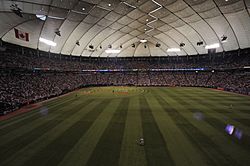
In 1982, the Twins moved into the Hubert H. Humphrey Metrodome in downtown Minneapolis. They shared it with the Minnesota Vikings football team. The Twins had a very tough start to the season, but they improved later. In 1984, Carl Pohlad bought the Twins. He promised to keep the team in Minnesota. The Metrodome hosted the 1985 Major League Baseball All-Star Game.
After several losing seasons, the 1987 team made it to the World Series. Key players included Hrbek, Gary Gaetti, Frank Viola, Bert Blyleven, Jeff Reardon, Tom Brunansky, Dan Gladden, and rising star Kirby Puckett. They beat the Detroit Tigers in the ALCS. Tom Kelly managed the Twins to World Series victories over the St. Louis Cardinals in 1987 and the Atlanta Braves in 1991.
The 1988 Twins were the first American League team to have more than 3 million fans attend their games. On July 17, 1990, the Twins made history by completing two triple plays in the same game. Pitcher Jack Morris was a star in the 1991 World Series. He won two games and had a very low earned run average. The 1991 season was also special because both the Twins and the Braves had finished in last place the year before.
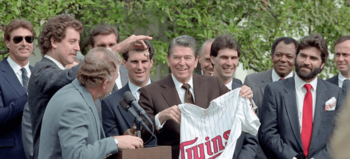
Many people consider the 1991 World Series one of the best ever. Four games were won in the final at-bat, and three of those went into extra innings. The Atlanta Braves won all their home games, and the Twins won all four of their home games in Minnesota. This was only the second time in MLB history a team won all its home games to win the World Series. The Twins also did this in 1987.
Game 6 was legendary for Puckett. He hit a triple, made an amazing catch, and then hit a game-winning home run in the 11th inning. Game 7 was tied 0–0 after nine innings, only the second time a World Series Game 7 went into extra innings. The Twins won on a hit by Gene Larkin in the bottom of the 10th inning, after Morris pitched ten shutout innings. The seventh game of the 1991 World Series is widely seen as one of the greatest baseball games ever.
After a winning season in 1992, the Twins had several losing seasons. From 1994 to 1997, many players retired or got injured, which hurt the team. Tom Kelly tried to rebuild the team. In 1997, owner Carl Pohlad almost sold the Twins to a businessman who would have moved the team.
Puckett had to retire at age 35 because he lost vision in one eye. He was the Twins' all-time leader in hits, runs, doubles, and total bases. His career batting average of .318 was the highest for any right-handed American League batter since Joe DiMaggio. Puckett was elected to the Baseball Hall of Fame in 2001, his first year of eligibility.
2000s Division Titles
The Twins were very strong in the Central Division in the early 2000s. They won the division six times between 2002 and 2010. From 2001 to 2006, the Twins had their longest streak of winning seasons since moving to Minnesota.
In 2002, the team reached the American League Championship Series. They were eliminated by the Anaheim Angels, who went on to win the World Series that year.
In 2006, the Twins won the division on the very last day of the regular season. However, they lost to the Oakland Athletics in the ALDS. Opposing manager Ozzie Guillén called the Twins "little piranhas" because of their aggressive play. The Twins players liked the nickname. The team even had a "Piranha Night" and sold merchandise with the piranha theme. That year, the Twins had the AL MVP in Justin Morneau, the AL batting champion in Joe Mauer, and the AL Cy Young Award winner in Johan Santana.
In 2008, the Twins finished tied with the White Sox for the AL Central lead. They played a special one-game playoff in Chicago to decide the division champion, but the Twins lost. The rule for deciding the location of tiebreaker games was changed in 2009.
In 2009, the Twins won 17 of their last 21 games to tie the Detroit Tigers for the Central Division lead. They won a thrilling tiebreaker game in 12 innings with a hit by Alexi Casilla. However, they lost the American League Divisional Series in three straight games to the New York Yankees. That year, Joe Mauer became only the second catcher in 33 years to win the AL MVP award.
2010 was the Twins' first season at Target Field. They finished with a 94–68 record, winning the AL Central Division title for the sixth time in nine years under manager Ron Gardenhire. New players included rookie Danny Valencia, Jim Thome, Matt Capps, J. J. Hardy, and Orlando Hudson. On July 7, Justin Morneau got a concussion and missed the rest of the season. In the divisional series, the Twins lost to the Yankees again in a three-game sweep. Ron Gardenhire won the AL Manager of the Year award after the season.
Recent Seasons: 2017–present
In 2017, the Twins had a record of 85–77, finishing second in the AL Central. Players like Brian Dozier, Miguel Sanó, Byron Buxton, and Eddie Rosario had strong years, and Joe Mauer hit .305. They made the playoffs, becoming the first team ever to lose 100 games the previous year and then make the playoffs. They lost to the Yankees in the wild card round.
The 2018 season was not as good. The Twins went 78–84 and did not make the playoffs. Sanó and Buxton were injured for much of the year. Long-time Twin Brian Dozier was traded. A special moment happened at the end of the season when hometown hero Joe Mauer returned to catcher for his final game. He ended his career with a double and a standing ovation. After the season, manager Paul Molitor was fired.
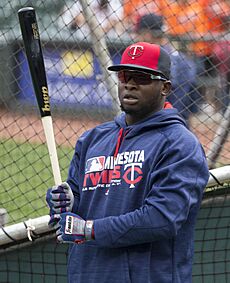
In 2019, the Twins won the AL Central Division for the first time since 2010. They finished with 101 wins, their second-most in franchise history. The team hit a total of 307 home runs, the most in MLB history for a single season. This powerful hitting earned them the nickname Bomba Squad. In the 2019 ALDS, the Twins played the New York Yankees. The Yankees had hit 306 home runs, just one less than the Twins. The Twins were swept again, extending their postseason losing streak to 16 games. On September 17, 2019, Miguel Sanó hit a 482-foot home run. This made the Twins the first team in major league history to have five players with at least 30 home runs in a season.
In 2023, the Minnesota Twins had a tough first half but then played much better. They took control of the AL Central and finished as the third seed in the AL for the 2023 MLB Playoffs. They faced the Toronto Blue Jays in the AL Wild Card round. With strong pitching, they won the first two games of the series. This ended their 0–18 postseason losing streak, which was the longest in North American sports history. They also won their first playoff series since the 2002 ALDS against the Oakland Athletics.
New Stadium: Target Field
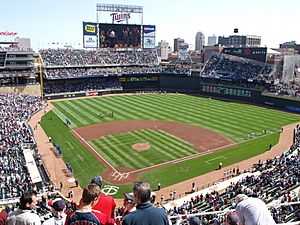
The Twins argued that their old stadium, the Hubert H. Humphrey Metrodome, was outdated. They also said sharing a stadium with the NFL's Minnesota Vikings limited their income. This made it hard to keep a competitive team. There were rumors that the team might move to other cities. In 2002, Major League Baseball considered getting rid of the Twins and the Montreal Expos because they were struggling financially. However, a court decision made the Twins play out their lease at the Metrodome.
To keep the Twins in Minnesota, a new stadium deal was made. Target Field was built in downtown Minneapolis. It is a baseball-only outdoor stadium with natural grass. The stadium cost $544.4 million. Most of the money came from a sales tax in Hennepin County, and the rest from the Pohlad family. As part of the deal, the Twins signed a 30-year lease for the new stadium. This meant the team would stay in Minnesota for a long time.
Construction of Target Field began in 2007 and finished in December 2009, ready for the 2010 season. Commissioner Bud Selig said that without the new stadium, the Twins could not have signed their star player, Joe Mauer, to a big contract. The first regular-season game at Target Field was on April 12, 2010. The Twins beat the Boston Red Sox 5–2, with Mauer getting three hits and driving in two runs.
On May 18, 2011, Street and Smiths SportsBusiness Journal named Target Field "The Best Place To Shop." ESPN The Magazine also called it "The Best Sports Stadium in North America." The stadium hosted the 85th Major League Baseball All-Star Game and the Home Run Derby in 2014. In mid-2020, a statue of former owner Calvin Griffith was removed from outside the stadium due to his history of racist comments.
Team Uniforms
Current Uniforms
Starting in 2023, the Twins changed their uniforms a lot. The white home uniform has an updated "Twins" logo in red with navy numbers. On the back, player names are navy, and numbers are red. The left sleeve has a navy Minnesota state map with a red star for the Twin Cities. The home cap is all-navy with the updated "TC" logo.
Road gray uniforms have "MINNESOTA" in navy with red numbers. Player names are navy, and numbers are red. The new navy Minnesota map with a red star is on the left sleeve. Navy pinstripes were also added. The road cap is all-navy with a white "M" and a red star, representing the north star.
The alternate navy uniforms can be worn at home or on the road. They have "MINNESOTA" in white with red numbers. Player names are white, and numbers are red. The left sleeve has the updated "TC" logo. These are worn with the road all-navy "M" cap.
The alternate home cream uniform has a new "Twin Cities" logo in navy. This uniform does not use red. It also has two crossed navy flags for Minneapolis ("M") and St. Paul ("STP"). An alternate all-navy cap with a cream "TC" logo is used.
In 2024, a new City Connect uniform was added. It is mostly blue with yellow accents and represents Minnesota's "Land of 10,000 Lakes" nickname. It has "MN" on the chest and a yellow four-point star for the north star. The sleeve patch shows a loon flying over water. The caps are blue with a yellow brim and have the Minnesota state outline with a yellow star.
Past Uniforms
From 1961 to 1971, the Twins wore uniforms with a classic "Twins" logo and numbers in navy outlined in red. Their caps were navy with an interlocking "TC" (for Twin Cities). The original "Minnie and Paul" logo was on the left sleeve.
In 1972, the Twins updated their uniforms. The colors on the "Twins" logo and numbers were swapped. Pinstripes were removed from the home uniform.
In 1973, the Twins switched to pullover uniforms made of polyester. They added powder blue road uniforms. Chest numbers were added, and a red cap with a navy brim was used with the home uniform.
In 1987, the Twins changed their look again. Home white uniforms brought back pinstripes and a modern "Twins" logo. The team felt established enough to put a stylized "M" on their caps. The "TC" logo moved to the left sleeve. Road gray uniforms had pinstripes and "Minnesota" in red block letters.
For a few games in 1997, the Twins wore red alternate uniforms. They also released a road navy alternate uniform. The following season, the red uniforms were replaced with a home navy alternate.
The Twins also wore other alternate uniforms in the past. In 2006, they wore sleeveless home uniforms. They also wore throwback versions of their old uniforms, including a cream-colored one from 1961–71.
In 2010, the Twins changed their road uniforms when they moved to Target Field. The pinstriped home uniforms stayed. The road uniforms had an updated "Minnesota" logo in red trimmed in navy.
In 2015, the Twins changed their home uniform again. It featured a modern "Twins" logo in navy outlined in red with gold shadows. The caps were all-navy with a gold-outlined "TC" logo. The next year, they added a red alternate uniform.
In 2019, a new home navy alternate was released with a classic "Twins" logo in red outlined in navy and gold. The following year, a throwback powder blue uniform was introduced. It was a modern version of their 1973–86 road uniform.
Team Roster
|
Minnesota Twins 2023 spring training roster
|
||||||
|---|---|---|---|---|---|---|
| 40-man roster | Non-roster invitees | Coaches/Other | ||||
|
Pitchers
|
Catchers
Infielders
Outfielders
|
|
Manager
Coaches
40 active, 0 inactive, 0 non-roster invitees
|
|||
A complete list of players who played for the Twins franchise can be found at Minnesota Twins all-time roster.
Minor League Teams
The Minnesota Twins have six minor league teams where younger players develop their skills.
| Class | Team | League | Location | Ballpark | Affiliated |
|---|---|---|---|---|---|
| Triple-A | St. Paul Saints | International League | Saint Paul, Minnesota | CHS Field | 2021 |
| Double-A | Wichita Wind Surge | Texas League | Wichita, Kansas | Riverfront Stadium | 2021 |
| High-A | Cedar Rapids Kernels | Midwest League | Cedar Rapids, Iowa | Veterans Memorial Stadium | 2013 |
| Single-A | Fort Myers Mighty Mussels | Florida State League | Fort Myers, Florida | Hammond Stadium | 1993 |
| Rookie | FCL Twins | Florida Complex League | Lee County Sports Complex | 1989 | |
| DSL Twins | Dominican Summer League | Boca Chica, Santo Domingo | Baseball City Complex | 2001 |
Team Achievements
Baseball Hall of Fame Members
| Minnesota Twins Hall of Famers | ||||||||||||||||||
|---|---|---|---|---|---|---|---|---|---|---|---|---|---|---|---|---|---|---|
| Affiliation according to the National Baseball Hall of Fame and Museum | ||||||||||||||||||
|
Some players like Molitor, Morris, and Winfield joined the Twins late in their careers. They were elected to the Hall of Fame mostly for their time with other teams. Molitor and Winfield both got their 3,000th hit with Minnesota. Morris pitched a complete-game shutout for the Twins in Game 7 of the 1991 World Series.
Ford C. Frick Award Recipients
| Minnesota Twins Ford C. Frick Award recipients | |||||||||
|---|---|---|---|---|---|---|---|---|---|
| Affiliation according to the National Baseball Hall of Fame and Museum | |||||||||
|
Twins Hall of Fame
| Year | Year inducted |
|---|---|
| Bold | Member of the Baseball Hall of Fame |
|
|
Member of the Baseball Hall of Fame as a Twin |
| Bold | Recipient of the Hall of Fame's Ford C. Frick Award |
| Minnesota Twins Hall of Fame | ||||
| Year | No. | Name | Position(s) | Tenure |
|---|---|---|---|---|
| 2000 | 3 | Harmon Killebrew |
1B | 1961–1974 |
| 29 | Rod Carew |
2B | 1967–1978 | |
| 6 | Tony Oliva |
RF/DH | 1962–1976 | |
| 14 | Kent Hrbek | 1B | 1981–1994 | |
| 34 | Kirby Puckett |
CF | 1984–1995 | |
| — | Calvin Griffith | President and Owner | 1961–1984 | |
| 2001 | — | Herb Carneal |
Radio Broadcaster | 1962–2007 |
| 36 | Jim Kaat |
P | 1961–1973 | |
| 2002 | 28 | Bert Blyleven |
P | 1970–1976 1985–1988 |
| 10 | Tom Kelly | Manager | 1986–2001 | |
| 2003 | 4 | Bob Allison | OF | 1961–1970 |
| — | Bob Casey | Public Address Announcer | 1961–2004 | |
| 2004 | 10 | Earl Battey | C | 1961–1967 |
| 2005 | 16 | Frank Viola | P | 1982–1989 |
| — | Carl Pohlad | Owner | 1984–2009 | |
| 2006 | 2 | Zoilo Versalles | SS | 1961–1967 |
| 2007 | 8 | Gary Gaetti | 3B | 1981–1990 |
| — | Jim Rantz | Director of Minor Leagues | 1986–2012 | |
| 2008 | 38 | Rick Aguilera | P | 1989–1995 1996–1999 |
| 2009 | 22, 23, 59 | Brad Radke | P | 1995–2006 |
| — | George Brophy | Front office executive | 1961–1985 | |
| 2010 | 7 | Greg Gagne | SS | 1983–1992 |
| 2011 | 31 | Jim Perry | P | 1963–1972 |
| 2012 | 17 | Camilo Pascual | P | 1961–1966 |
| 2013 | 18 | Eddie Guardado | P | 1993–2003, 2008 |
| — | Tom Mee | Media Relations Director | 1961–1991 | |
| 2016 | — | John Gordon | Radio Broadcaster | 1987–2011 |
| 48 | Torii Hunter | CF/RF | 1997–2007, 2015 | |
| 2017 | 5 | Michael Cuddyer | RF | 2001–2011 |
| — | Andy MacPhail | General Manager | 1985–1994 | |
| 2018 | 57 | Johan Santana | P | 2000–2007 |
| 2019 | 36 | Joe Nathan | P | 2004–2009, 2011 |
| — | Jerry Bell | President | 1987–2002 | |
| 2020 | 33 | Justin Morneau | 1B | 2003–2013 |
| 2022 | 35 | Ron Gardenhire | Coach/Manager | 1991–2001 2002–2014 |
| 32 | Dan Gladden | LF | 1987–1991 | |
| 12 | César Tovar | IF/OF | 1965–1972 | |
| 2023 | 7 | Joe Mauer |
C/1B | 2004–2018 |
| 2024 | Terry Ryan | GM | 1994–2007, 2011–2016 | |
| 43 | Rick Stelmaszek | Coach | 1981–2012 | |
| 2025 | 47 | Corey Koskie | 3B | 1998–2004 |
Retired Numbers
The Twins honor important players by retiring their jersey numbers. This means no other player on the team can wear that number again.
|
At Target Field, the retired numbers are displayed in left field. They also serve as names for the stadium's entry gates. For example, Gate No. 3 honors Harmon Killebrew.
Jackie Robinson's No. 42 was retired by all of Major League Baseball on April 15, 1997. The Twins formally honored it on May 23, 1997. On August 11, 2024, the Twins added a permanent "W" display. This "W" reminds everyone of the team's history as the Washington Senators and their 1924 World Series win.
| Player | Jersey | Position | Date retired |
|---|---|---|---|
| Harmon Killebrew | 3 | LF-1B-3B: 1954–60 (WSH) LF-1B-3B: 1961–74 (MIN) |
May 4, 1975 |
| Rod Carew | 29 | 1B-2B: 1967–78 (MIN) | July 19, 1987 |
| Tony Oliva | 6 | RF-DH: 1962–76 (MIN) Coach: 1976–78 (MIN) Coach: 1985–91 (MIN) |
July 14, 1991 |
| Kent Hrbek | 14 | 1B: 1981–94 (MIN) | August 13, 1995 |
| Jackie Robinson | 42 | Retired by MLB | April 15, 1997 |
| Kirby Puckett | 34 | CF: 1984–95 (MIN) | May 25, 1997 |
| Bert Blyleven | 28 | P: 1970–76 (MIN) P: 1985–88 (MIN) |
July 16, 2011 |
| Tom Kelly | 10 | Manager: 1986–2001 (MIN) | September 8, 2012 |
| Joe Mauer | 7 | C-1B-DH: 2004–2018 (MIN) | June 15, 2019 |
| Jim Kaat | 36 | P: 1959–60 (WSH) P: 1961–73 (MIN) |
July 16, 2022 |
Team Records
Team Seasons
| Year | Regular Season | Postseason | Result | ||||||
|---|---|---|---|---|---|---|---|---|---|
| Wins | Losses | Win % | Finish | Attendance | Attendance per Game | Record | Win % | ||
| 2001 | 85 | 77 | .525 | 2nd – AL Central | 1,782,929 | 22,011 | — | — | |
| 2002 | 94 | 67 | .584 | 1st – AL Central | 1,924,473 | 23,906 | 4–6 | .400 | Won ALDS vs Oakland Athletics, 3–2 Lost ALCS to Anaheim Angels, 1–4 |
| 2003 | 90 | 72 | .556 | 1st – AL Central | 1,946,011 | 24,025 | 1–3 | .250 | Lost ALDS to New York Yankees, 1–3 |
| 2004 | 92 | 70 | .568 | 1st – AL Central | 1,911,490 | 23,599 | 1–3 | .250 | Lost ALDS to New York Yankees, 1–3 |
| 2005 | 83 | 79 | .512 | 3rd – AL Central | 2,034,243 | 25,114 | — | — | |
| 2006 | 96 | 66 | .593 | 1st – AL Central | 2,285,018 | 28,210 | 0–3 | .000 | Lost ALDS to Oakland Athletics, 0–3 |
| 2007 | 79 | 83 | .488 | 3rd – AL Central | 2,296,347 | 28,349 | — | — | |
| 2008 | 88 | 75 | .540 | 2nd – AL Central | 2,302,611 | 28,427 | — | — | |
| 2009 | 87 | 76 | .534 | 1st – AL Central | 2,416,237 | 29,466 | 0–3 | .000 | Lost ALDS to New York Yankees, 0–3 |
| 2010 | 94 | 68 | .580 | 1st – AL Central | 3,223,640 | 39,798 | 0–3 | .000 | Lost ALDS to New York Yankees, 0–3 |
| 2011 | 63 | 99 | .389 | 5th – AL Central | 3,168,107 | 39,112 | — | — | |
| 2012 | 66 | 96 | .407 | 5th – AL Central | 2,776,354 | 34,275 | — | — | |
| 2013 | 66 | 96 | .407 | 4th – AL Central | 2,477,644 | 30,588 | — | — | |
| 2014 | 70 | 92 | .432 | 5th – AL Central | 2,250,606 | 27,785 | — | — | |
| 2015 | 83 | 79 | .521 | 2nd – AL Central | 2,220,054 | 27,408 | — | — | |
| 2016 | 59 | 103 | .364 | 5th – AL Central | 1,963,912 | 24,246 | — | — | |
| 2017 | 85 | 77 | .525 | 2nd – AL Central | 2,051,279 | 25,324 | 0–1 | .000 | Lost AL Wild Card Game (Yankees) |
| 2018 | 78 | 84 | .481 | 2nd – AL Central | 1,959,197 | 24,489 | — | — | |
| 2019 | 101 | 61 | .623 | 1st – AL Central | 2,294,152 | 28,322 | 0–3 | .000 | Lost ALDS to New York Yankees, 0–3 |
| 2020 | 36 | 24 | .600 | 1st – AL Central | 0 | 0 | 0–2 | .000 | Lost ALWCS to Houston Astros, 0–2 |
| 2021 | 73 | 89 | .451 | 5th – AL Central | 1,310,199 | 16,377 | — | — | |
| 2022 | 78 | 84 | .481 | 3rd – AL Central | 1,801,128 | 22,236 | — | — | |
| 2023 | 87 | 75 | .537 | 1st – AL Central | 1,974,124 | 24,372 | 3–3 | .500 | Won ALWCS vs Toronto Blue Jays, 2–0 Lost ALDS to Houston Astros, 1–3 |
| 2024 | 82 | 80 | .506 | 4th – AL Central | 1,951,616 | 24,094 | — | — | |
| Total as Twins | 5036 | 5091 | .497 | – | – | – | 28–45 | .384 | 2 World Series Championships |
Radio and Television Broadcasts
In 2007, the Twins took control of their radio broadcasts and created the Twins Radio Network (TRN). KSTP (AM 1500) became their main radio station. It replaced WCCO (AM 830), which had broadcast Twins games since 1961. In 2013, the Twins moved to FM radio on KTWN-FM 96.3 K-Twin.
The first radio voices of the Twins in 1961 were Ray Scott, Halsey Hall, and Bob Wolff. After the first season, Herb Carneal joined. Twins broadcasts were originally sponsored by Hamm's Brewing Company. In 2009, Treasure Island Resort & Casino became the first naming rights partner for the Twins Radio Network. In 2017, WCCO became the main station for the Twins again, starting in 2018.
Cory Provus is the current radio play-by-play announcer. He took over in 2012 after John Gordon retired. Former Twins outfielder Dan Gladden is the color commentator.
TRN broadcasts come from the studios at Minnesota News Network and Minnesota Farm Networks. Kris Atteberry hosts the pre-game and post-game shows.
On April 1, 2007, Herb Carneal, who was the radio voice of the Twins for almost their entire history, passed away. Carneal is honored in the broadcasters' wing of the Baseball Hall of Fame.
In October 2024, Major League Baseball's local media division announced it would take over producing Twins games starting with the 2025 season. The Twins later announced a deal to show ten regular season games on Minneapolis-St. Paul Fox station KMSP-TV.
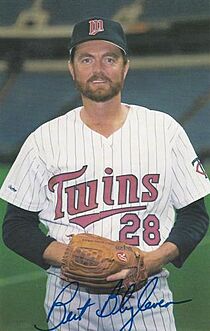
Before 2025, Bally Sports North (now FanDuel Sports Network North) held the television rights. Dick Bremer was the play-by-play announcer. Former Twins players Roy Smalley, Justin Morneau, Glen Perkins, and LaTroy Hawkins were analysts.
In 2024, the Twins announced that Provus would move to TV play-by-play after Dick Bremer retired. Atteberry replaced Provus on the radio side.
Bob Casey was the Twins' first public-address announcer from 1961 until his death in 2005. He was known for his unique announcements, like asking fans not to "throw anything or anybody" onto the field.
Team Traditions
Fans wave a Homer Hanky to cheer on the team during playoffs and important games. The Homer Hanky was created by Terrie Robbins of the Star Tribune newspaper in 1987. Over 2.3 million Homer Hankies were given out that year.
The Twins clubhouse is known for its lively atmosphere after a win. Players often relax with loud rock music and video games.
The team has some fun traditions, like requiring the newest relief pitcher to carry water and snacks to the bullpen in a colorful child's backpack. Past backpacks have included Barbie, SpongeBob SquarePants, Hello Kitty, and Chewbacca. Many Twins players, past and present, are known for playing pranks. For example, Bert Blyleven was known for playing the "hotfoot" prank, where he would light a teammate's shoelaces on fire.
The team introduced T.C. Bear, its costumed mascot, on April 3, 2000.
See also
 In Spanish: Minnesota Twins para niños
In Spanish: Minnesota Twins para niños


